28
junioHow To Explain Bifold Door Repair To Your Grandparents
Bifold Door Repair: A Comprehensive Guide to Fixing Common Issues
Bifold doors, likewise called folding doors, are a popular option for homeowners wanting to maximize area and create smooth transitions between spaces or indoor and outdoor living locations. Their stylish, space-saving style enables large openings without the swing space required by traditional hinged doors. From closets and kitchens to patios and space dividers, bifold doors use adaptability and visual appeal. Nevertheless, like any mechanical element in a home, bifold doors can experience wear and tear in time, resulting in various functional issues. Luckily, numerous common bifold door issues are manageable with some fundamental DIY abilities and the best assistance.
This post functions as a comprehensive guide to understanding and resolving typical bifold door repairs. We will check out normal concerns, equip you with the needed tools and understanding, and walk you through step-by-step repair procedures. By understanding the mechanics of bifold doors and discovering fundamental repair methods, house owners can extend the life expectancy of their doors and avoid expensive expert service calls.

Comprehending Common Bifold Door Problems
Before diving into repairs, it's vital to identify the root cause of the issue. Bifold doors, while fairly simple in style, rely on a number of components operating in consistency. When one part breakdowns, it can affect the entire system. Here are a few of the most regular issues property owners encounter with bifold doors:
- Hanging or Sticking Doors: This is perhaps the most common problem. Doors might get stuck while opening or closing, need excessive force to move, or scrape versus the frame or floor. This can be brought on by misaligned hinges, deformed doors, or problems with the track and roller system.
- Misaligned Doors: Even when closed, bifold doors need to sit flush and aligned. Misalignment can manifest as spaces in between door panels, irregular spacing from the frame, or a failure to lock correctly. This can arise from loose hinges, warped doors, or shifted tracks.
- Harmed or Broken Hardware: The rollers, hinges, pivots, and tracks are the workhorses of a bifold door system. Over time and with regular use, these components can wear, break, or become harmed. Damaged rollers can prevent smooth moving, while harmed hinges can trigger sticking and misalignment. Damaged tracks can obstruct roller movement and cause jerky operation.
- Loose Screws and Fittings: Vibrations from routine usage can loosen up screws and fittings that hold the hinges, tracks, and other hardware in location. Loose elements can lead to instability, misalignment, and noisy operation.
- Distorted Doors: Exposure to wetness and temperature level changes can trigger wood bifold doors to warp. Warped doors can be hard to close correctly, may rub against the frame, and can create gaps.
Essential Tools and Materials for Bifold Door Repair
Having the right tools and products on hand will make the repair process substantially smoother and more effective. Here's a list of typical items you may need:
- Screwdrivers: A set of Phillips head and flathead screwdrivers of different sizes is essential for tightening and loosening up screws.
- Drill/Driver: For more persistent screws or for installing brand-new hardware, a drill/driver can be vital. Guarantee you have a variety of drill bits and screwdriver bits.
- Hammer: A hammer can be handy for gently tapping parts into place or for eliminating persistent pins.
- Pliers: Pliers work for gripping little parts, bending metal components, and removing pins.
- Level: A level is crucial for making sure doors are effectively lined up vertically and horizontally.
- Tape Measure: For accurate measurements when replacing parts or adjusting door positions.
- Wood Shims: Shims are thin pieces of wood used for leveling and lining up doors within the frame.
- Lube (Silicone Spray or Dry Lube): Lubricant can considerably improve the smooth operation of rollers and hinges.
- Replacement Rollers, Hinges, and Tracks: Depending on the concern, you may need to buy replacement parts. It's often valuable to recognize the maker and model of your bifold doors to guarantee you get compatible replacements.
- Wood Filler or Epoxy (for wooden doors): For repairing minor damage to wood doors, such as chipped corners or screw holes.
- Safety Glasses and Gloves: Always prioritize safety when carrying out DIY jobs.
Step-by-Step Quick Bifold Door Repairs Door Repair Guide
Now, let's look into the useful actions for fixing typical bifold door issues:
1. Resolving Hanging or Sticking Doors:
- Inspection: Begin by carefully observing where the door is sticking or hanging. Is it rubbing against the top, bottom, or side of the frame?
- Lubrication: Often, a simple lubrication of the rollers and track can fix sticking concerns. Apply silicone spray or dry lube to all moving parts, consisting of rollers, hinges, and the leading and bottom tracks. Open and close the door several times to disperse the lubricant.
- Hinge Adjustment: If lubrication doesn't deal with the issue, inspect the hinges. Loose hinges can trigger doors to sag. Tighten up any loose hinge screws. If the screws are removed, you might require to use longer screws or wood filler in the screw holes before re-screwing.
- Track Adjustment: In some cases, the track itself may be slightly misaligned. Check if the track is firmly attached to the frame. If it's loose, tighten up the screws. Minor track misalignment can often be fixed by carefully tapping the track into place with a hammer and block of wood.
- Door Warping: If the door is deformed, minor warping may be attended to by thoroughly straightening it utilizing clamps and weights. However, severely deformed doors may require to be replaced.
2. Repairing Misaligned Doors:
- Hinge Adjustment (Lateral Alignment): Misalignment can often be corrected by adjusting the hinges. Loosen up the hinge screws a little and carefully shift the door panel left or right to attain better alignment. Retighten the screws when lined up.
- Shims (Vertical Alignment): If the door is unequal vertically, you can use shims. Unlock and place shims behind the depend upon the lower panel to raise it or behind the hinges on the upper panel to reduce it. Experiment with shim positioning and thickness up until the doors are aligned, then tighten up the hinge screws firmly.
- Leveling the Frame: In uncommon cases, the door frame itself may be out of level. Use a level to check the frame. If it's not level, you might require to change the frame itself, which can be a more intricate job and may require expert help.
3. Replacing Damaged Hardware (Rollers, Hinges, Tracks):
- Roller Replacement:
- Open the bifold door and find the harmed roller.
- Depending upon the design, you might require to remove a maintaining clip or screw to release the old roller.
- Thoroughly remove the old roller.
- Insert the new roller, ensuring it is correctly seated and secured.
- Test the door operation.
- Hinge Replacement:
- Open the door and identify the harmed hinge.
- Remove the screws holding the hinge to both door panels and the frame.
- Eliminate the old hinge.
- Position the brand-new hinge in the same location.
- Protect the new hinge with screws.
- Evaluate the door operation.
- Track Replacement: Replacing a track is a more involved process and is usually just required if the track is significantly harmed or bent.
- Get rid of the bifold doors from the track.
- Loosen the old track from the frame.
- Step and cut the brand-new track to the proper length, if required.
- Position the new track and protect it to the frame with screws.
- Reinstall the bifold doors.
- Evaluate the door operation.
4. Tightening Loose Screws and Fittings:
- Regular Inspection: Periodically check all screws and fittings on your bifold doors.
- Tightening up: Use a screwdriver to tighten any loose screws.
- Stripped Screw Holes: If screws are regularly loosening up or stripped, you can utilize wood filler (for wood doors) or epoxy to repair the screw holes. Fill the hole, let it dry, pre-drill a pilot hole, and then re-install the screw. Additionally, usage somewhat longer or wider screws to get a much better grip.
Regular Maintenance for Bifold Doors
Preventative maintenance is essential to prolonging the life of your bifold doors and reducing the need for repairs. Here are some essential upkeep tips:
- Regular Cleaning: Keep the tracks and rollers tidy from dust, particles, and pet hair. Vacuum or wipe down tracks regularly.
- Lubrication: Lubricate rollers and hinges a minimum of twice a year or whenever you notice the doors starting to stick or squeak.
- Examine Hardware Periodically: Check for loose screws, used rollers, or damaged hinges throughout your regular home upkeep checks.
- Gentle Operation: Avoid slamming or requiring bifold doors. Operate them smoothly and gently to prevent unnecessary tension on the hardware.
When to Call a Professional
While lots of bifold door problems can be dealt with DIY, there are circumstances where it's best to call an expert handyman or door expert:
- Significant Door Warping: Severely distorted doors might be beyond DIY repair and need expert replacement.
- Complex Track Issues: If the track is substantially bent, harmed, or if you suspect structural issues with the frame, expert competence is recommended.
- Lack of DIY Experience: If you are uncomfortable with DIY repairs or do not have the essential tools, seeking expert help is constantly a safe and sensible alternative.
- Time Constraints: If you are brief on time or prefer to have actually the repair done quickly and efficiently, an expert can deal with the job.
Conclusion
Bifold doors are a valuable addition to any home, offering area efficiency and aesthetic appeal. Comprehending their mechanics and common problems empowers homeowners to carry out fundamental repairs and maintenance, guaranteeing their durability and smooth operation. By following the actions laid out in this guide, and with a little persistence and the right tools, you can effectively deal with most bifold door concerns and keep your doors working perfectly for years to come. Remember, regular maintenance and timely attention to small problems can prevent bigger issues and conserve you money and time in the long run.
Frequently Asked Questions (FAQs) about Bifold Door Repair
Q: Why are my bifold doors sticking?A: Sticking bifold doors are frequently triggered by absence of lubrication, misaligned hinges, or debris in the tracks and rollers.
Q: How often should I oil bifold door rollers?A: It's advised to lube bifold door rollers at least two times a year or whenever you discover the doors becoming less smooth to run.
Q: Can I replace bifold door rollers myself?A: Yes, replacing bifold door rollers is a reasonably simple DIY job. Ensure you buy suitable replacement rollers for your door type.
Q: My bifold doors are misaligned even when closed. How can I repair this?A: Misalignment can frequently be fixed by changing the hinges. Attempt loosening hinge screws and gently shifting door panels for much better alignment, or utilize shims behind hinges to change vertical alignment.
Q: What type of lubricant is best for bifold door rollers?A: Silicone spray or dry lubricant are outstanding options for bifold door rollers as they are less most likely to attract dust and debris compared to oil-based lubes.
Q: When should I consider changing my bifold doors instead of fixing them?A: Consider replacing bifold doors if they are substantially warped, thoroughly harmed, or if the cost of repairs outweighs the cost of brand-new doors, particularly if they are old and broken.


Reseñas